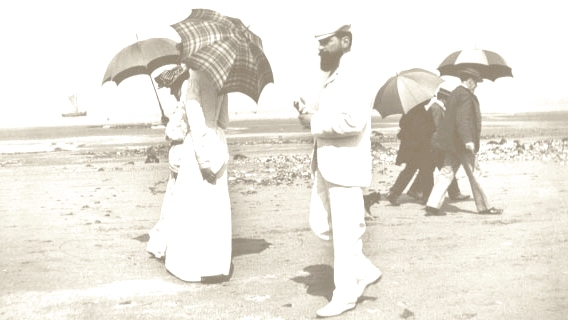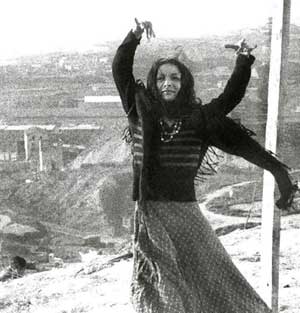
She was born in a thatched hut in Somorrostro. Her father was Francisco Amaya, "el Chino", a guitarist who made a harsh living "from one tavern to another, in permanent late nights of sour wine and thick vomit". When she was no more than four years old and was a skinny dark Gypsy girl, Carmen began to go out with her father at night to earn a living. The man played the guitar and the girl sang and danced. Then they passed the hat round, or simply picked up the coins the public threw on the ground.
“And the woman...that humanity she had that made her special. My family lived in Somorrostro, where Carmen was born, so they were neighbors.
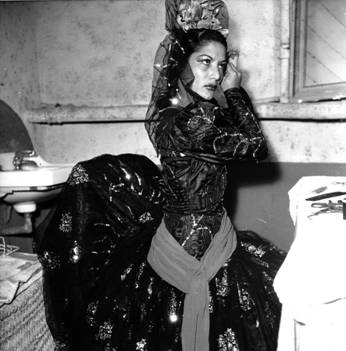 My older sister tells how she performed in the theater in Barcelona...all the tickets were sold out and many gypsies from Somorrostro couldn’t get in, either because they couldn’t afford it or because there were no tickets left. When Carmen found out, she went right to the neighborhood and danced for her ‘gitanicos’”.
My older sister tells how she performed in the theater in Barcelona...all the tickets were sold out and many gypsies from Somorrostro couldn’t get in, either because they couldn’t afford it or because there were no tickets left. When Carmen found out, she went right to the neighborhood and danced for her ‘gitanicos’”.Dolores Giménez
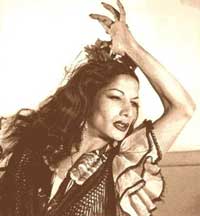
Flamenco today is deeply indebted to Carmen Amaya.Through her artistry and virtuosity, she effectively altered the history of flamenco dance forever.
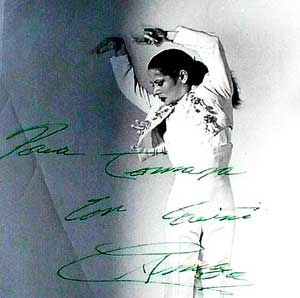
She crossed the traditional boundaries of flamenco by teaching herself the fast and furious footwork usually reserved for the male dancer. Donning a man's pants and jacket, she skillfully combined the elegance and grace of the female style with the ferocity and high-impact footwork of the male style sending shockwaves through the flamenco world unaccustomed to seeing a passionate and powerful woman in pants dancing a man's dance.
On his meeting with Carmen Amaya, Sabicas said, "We met when we were both children in Barcelona. I went to work there and I saw her dance one day – she was very young too. I became friends with her and her family." "I met Carmen in a restaurant called Casa de Manquet. There on the dock, where all the sailors used to go. A singer took me there, telling me, ‘Come, you’ll see someone dance’ I went in. The flamenco atmosphere was great. There was Carmen, very young. I was stunned to see what she could do... her hands, her feet... She carried everyone." "I saw her dance and it seemed like something supernatural to me... I never saw anyone dance like her. I don’t know how she did it, I just don’t know!".


Kazuo Ohno was born in 1906 in Hokkaido, Japan.
In 1926 Ohno made his way to Tokyo where he enrolled in the National School of Athletics. Shortly afterwards he encountered a performance of the Spanish dancer La Argentina, and began to dance. La Argentina inspired something in Ohno that never left him and became the impetus of his most famous performance Admiring La Argentina. Of La Argentina Kazuo said, "The dance of La Argentina invited people into a sea of excitement. She embodied dance, literature, music and art and furthermore she represented love and pain in real life."
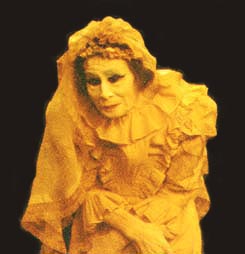
How to explain the dance performance of a 90 year old man? To merely describe the movement style or the choreography does not really bring forth the grace and dignity of his presence. Kazuo Ohno "performs" with the expression on his face, each small gesture and even in his stillness.
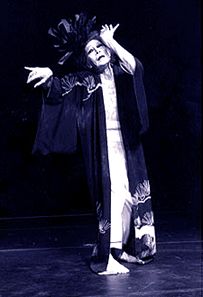 His form of Butoh dance is one in which structure is not most important. Instead, he is interested in bringing to life a quality of being embued with energy and emotion. His movement is not technically skilled but filled with an almost mystical sincerity.
His form of Butoh dance is one in which structure is not most important. Instead, he is interested in bringing to life a quality of being embued with energy and emotion. His movement is not technically skilled but filled with an almost mystical sincerity.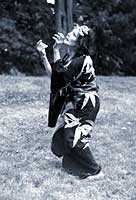
The curtain call is also a great part of this performance experience. Ohno comes down stage to communicate his thanks for the applause. He remains on-stage, laying on the floor, bowing, kneeling, ready to wait with us until we decide to end the applause. This has just the opposite affect, causing a standing ovation, which in turn causes Ohno to leap across the stage, smiling and making idiosyncratic, often humorous, gestures. All of this is sincere and spontaneous. There is nothing rigid about his place on stage and our place in the audience.
During the five years of performance before he and Hijikata met, Ohno's work was notably inspired by the evocations of the spirit. Said Kazuo Ohno of his greatest inspiration, "I had read about the creation of the world in the Bible; I'd always accepted it as a legend, but in La Argentina's work I saw it realized in front of my eyes. If this is creation, I would like to lift one corner of it."

